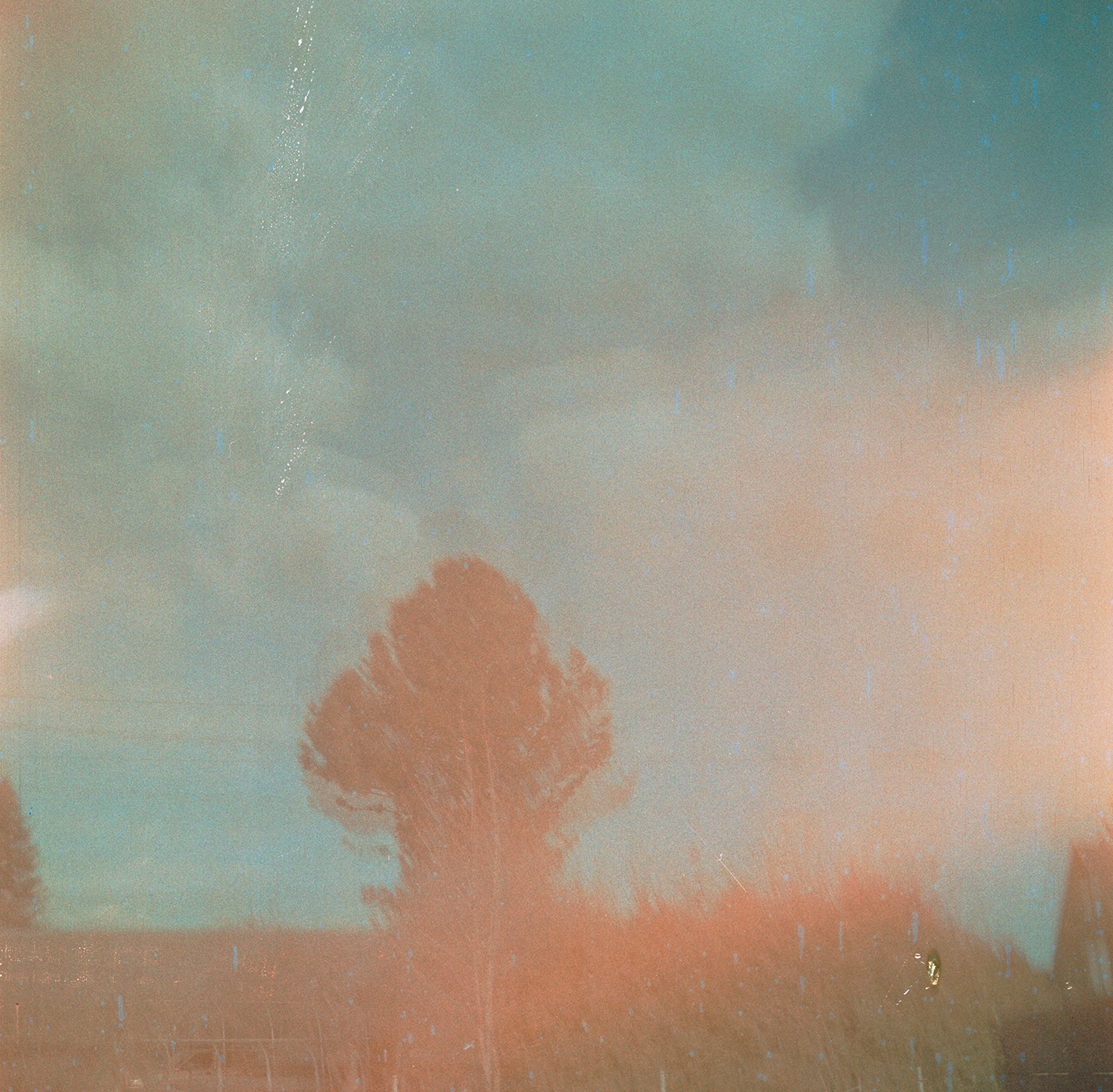
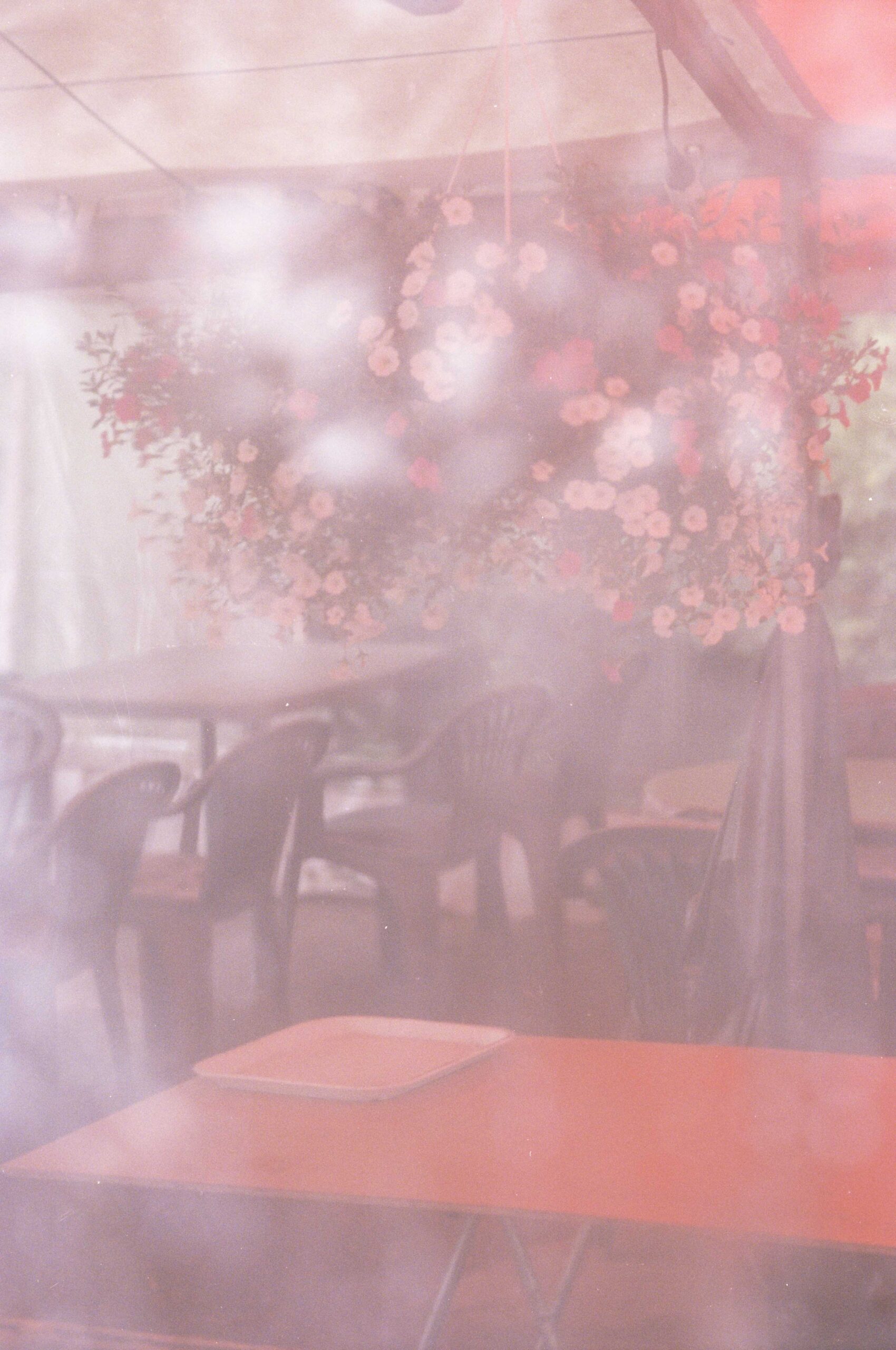
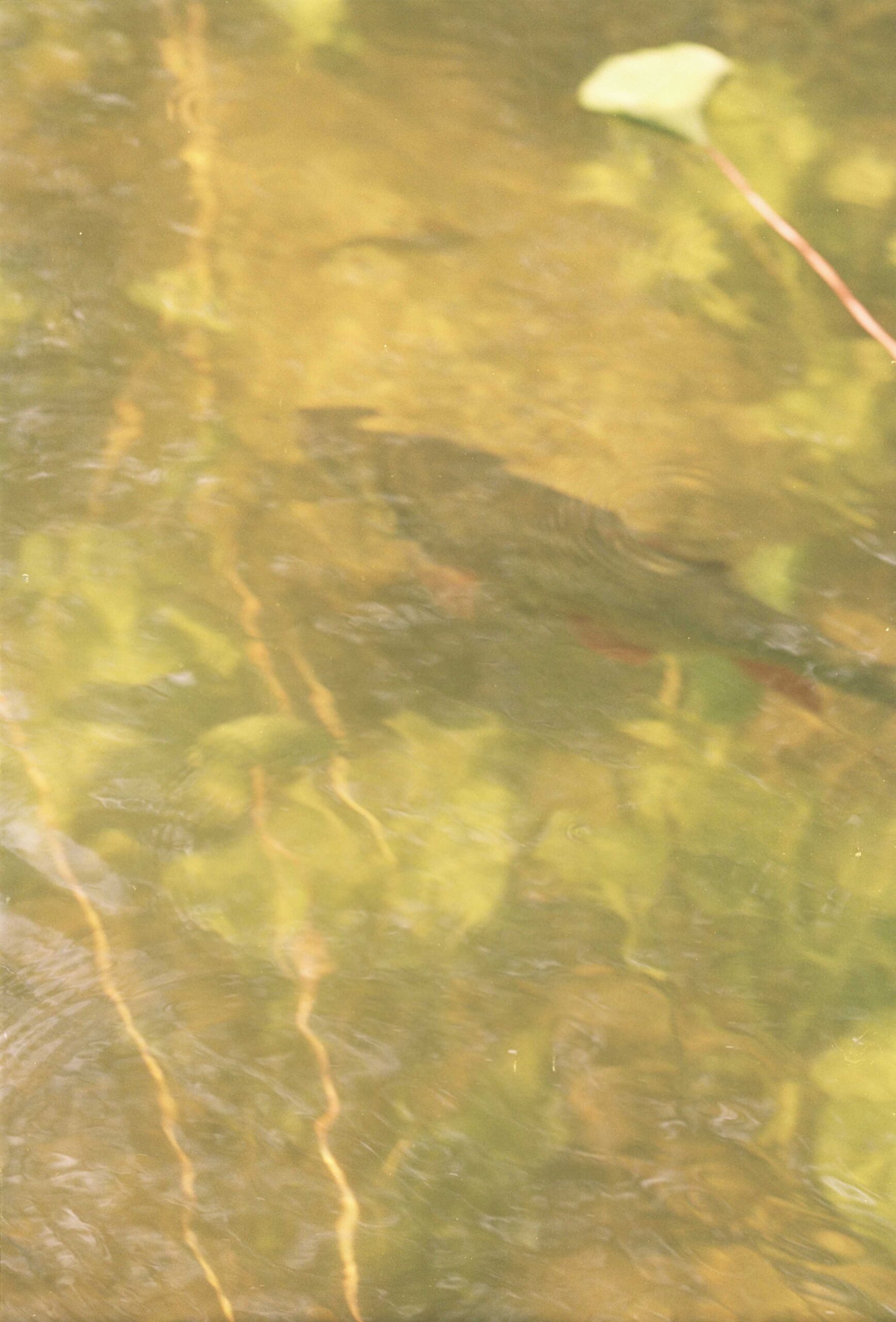
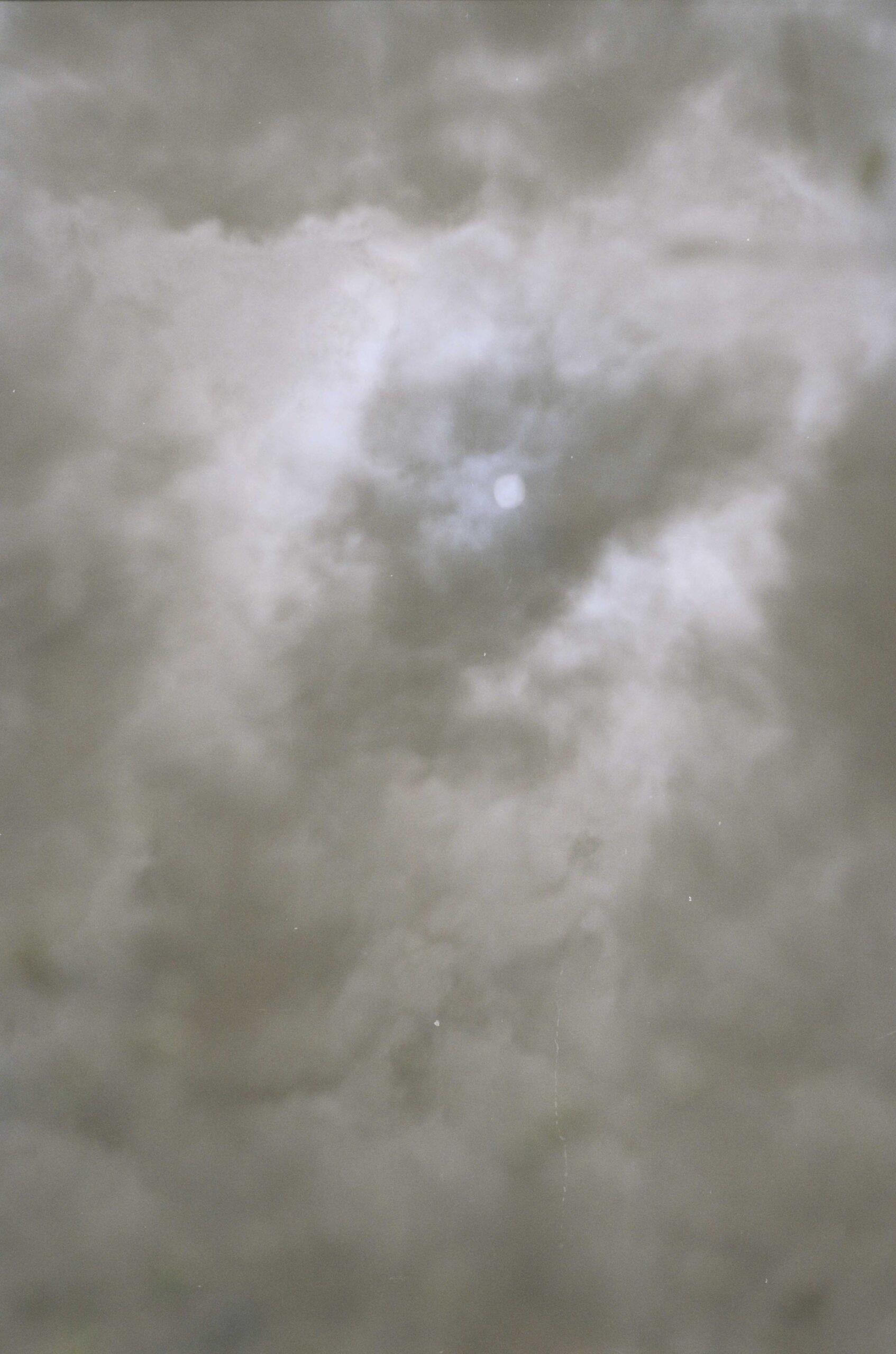
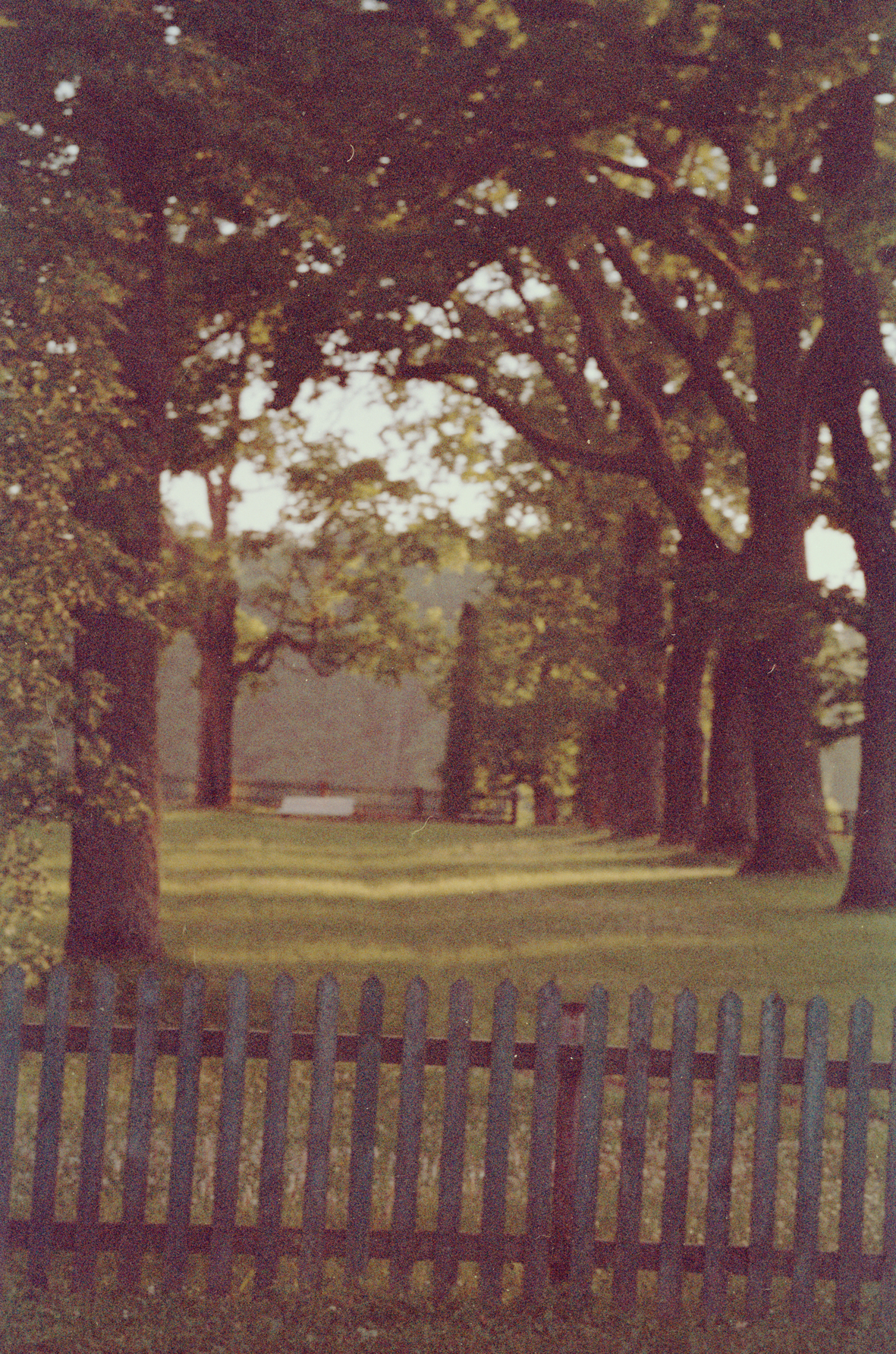
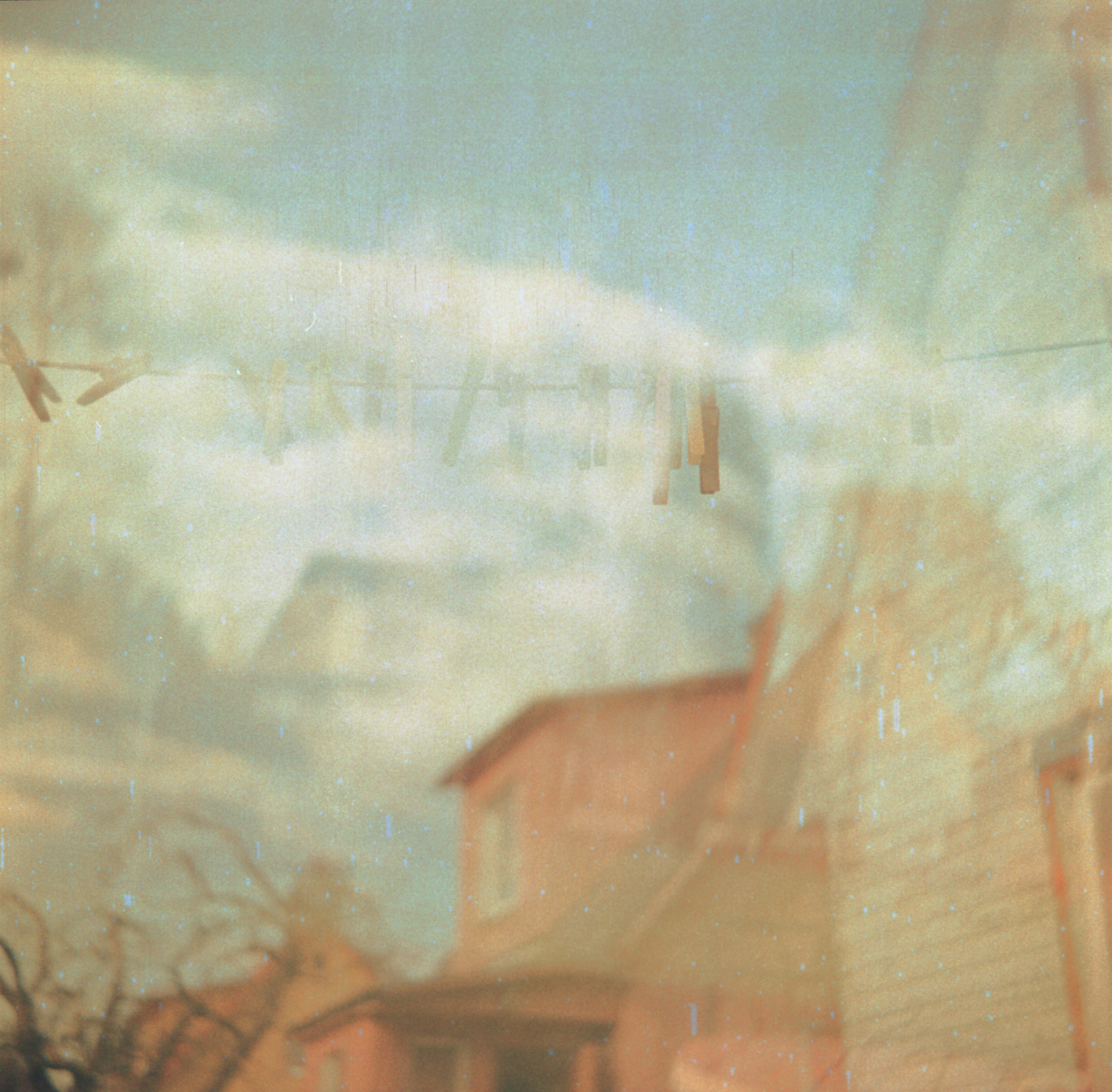
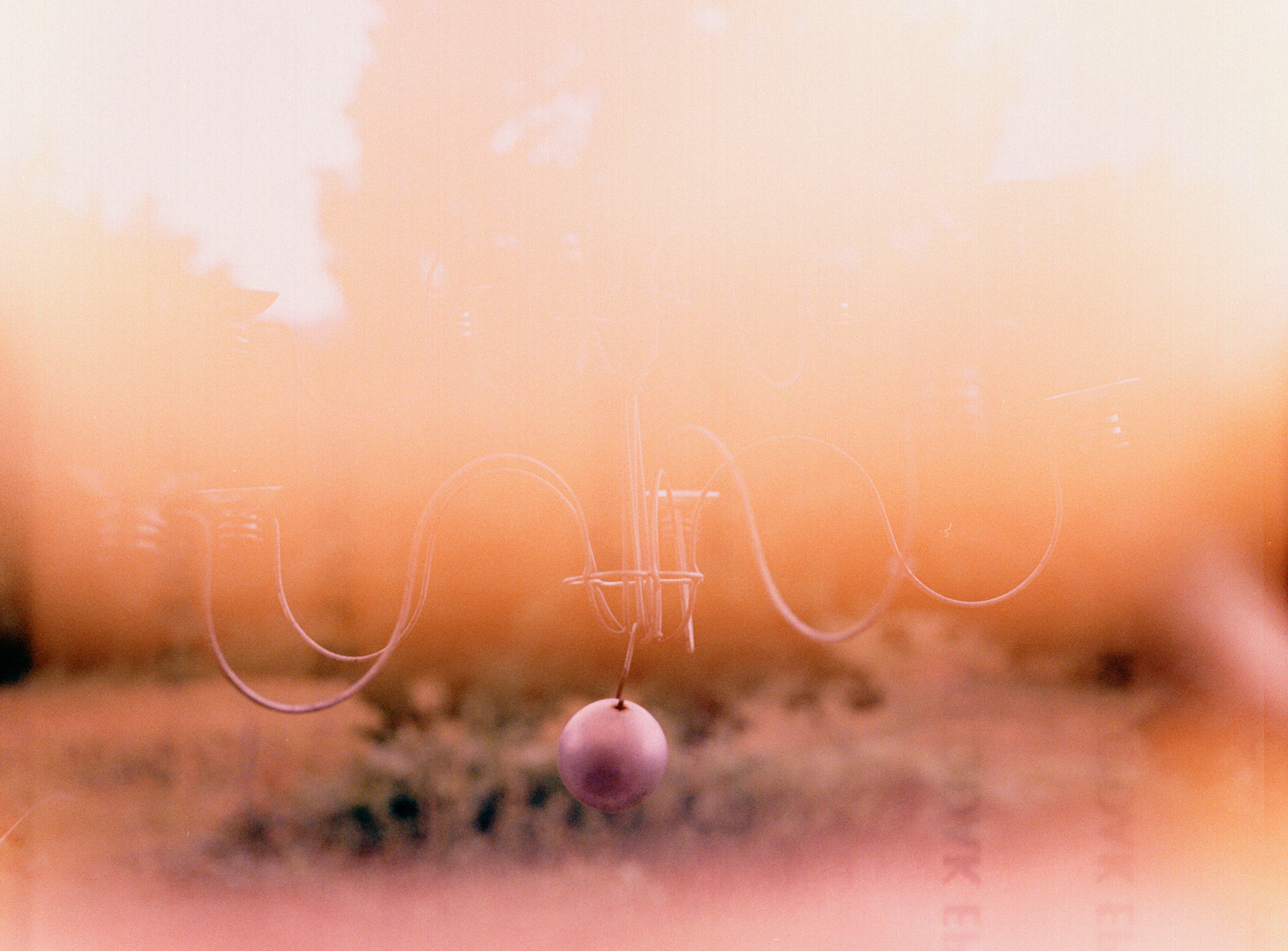

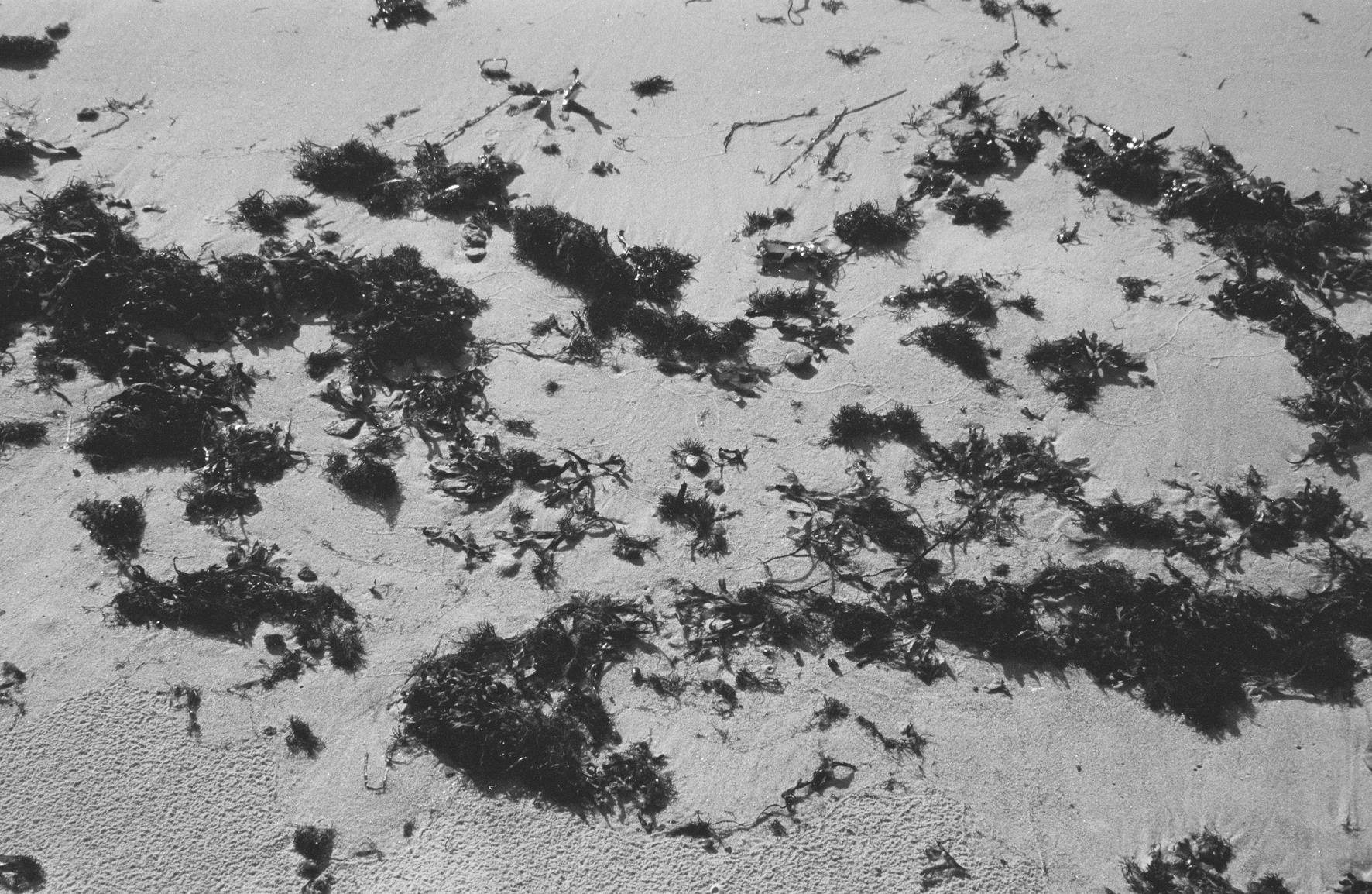
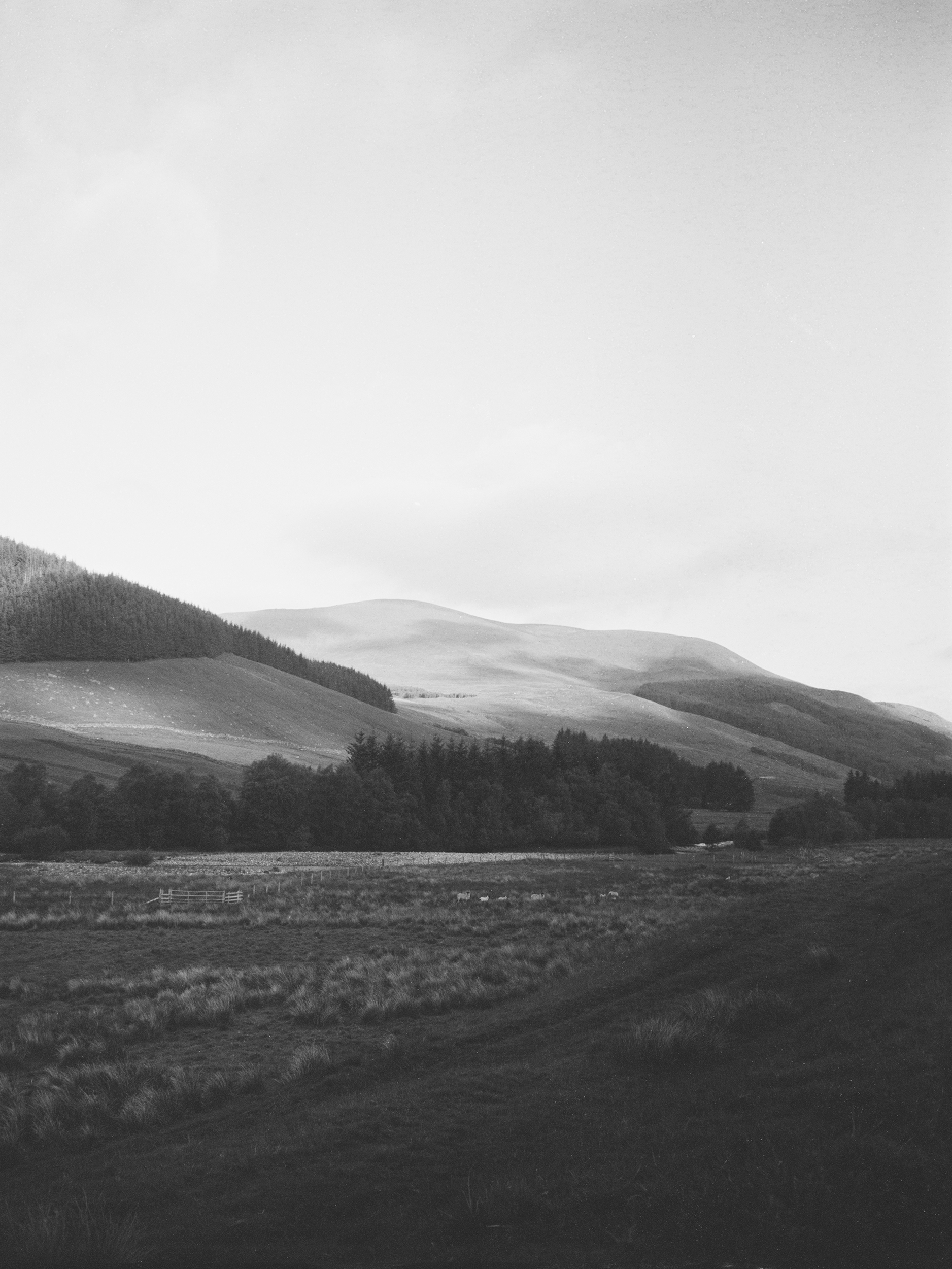
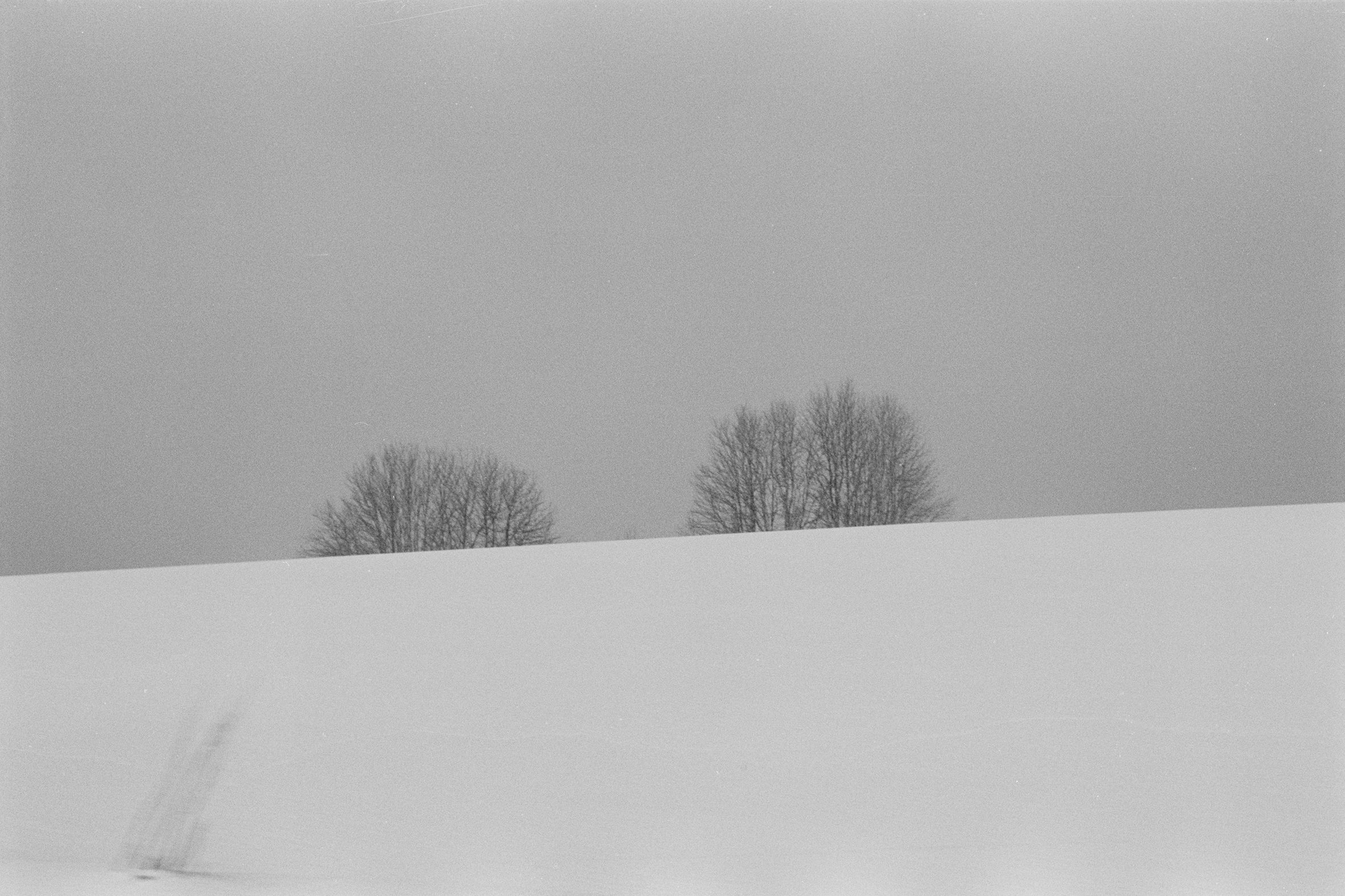
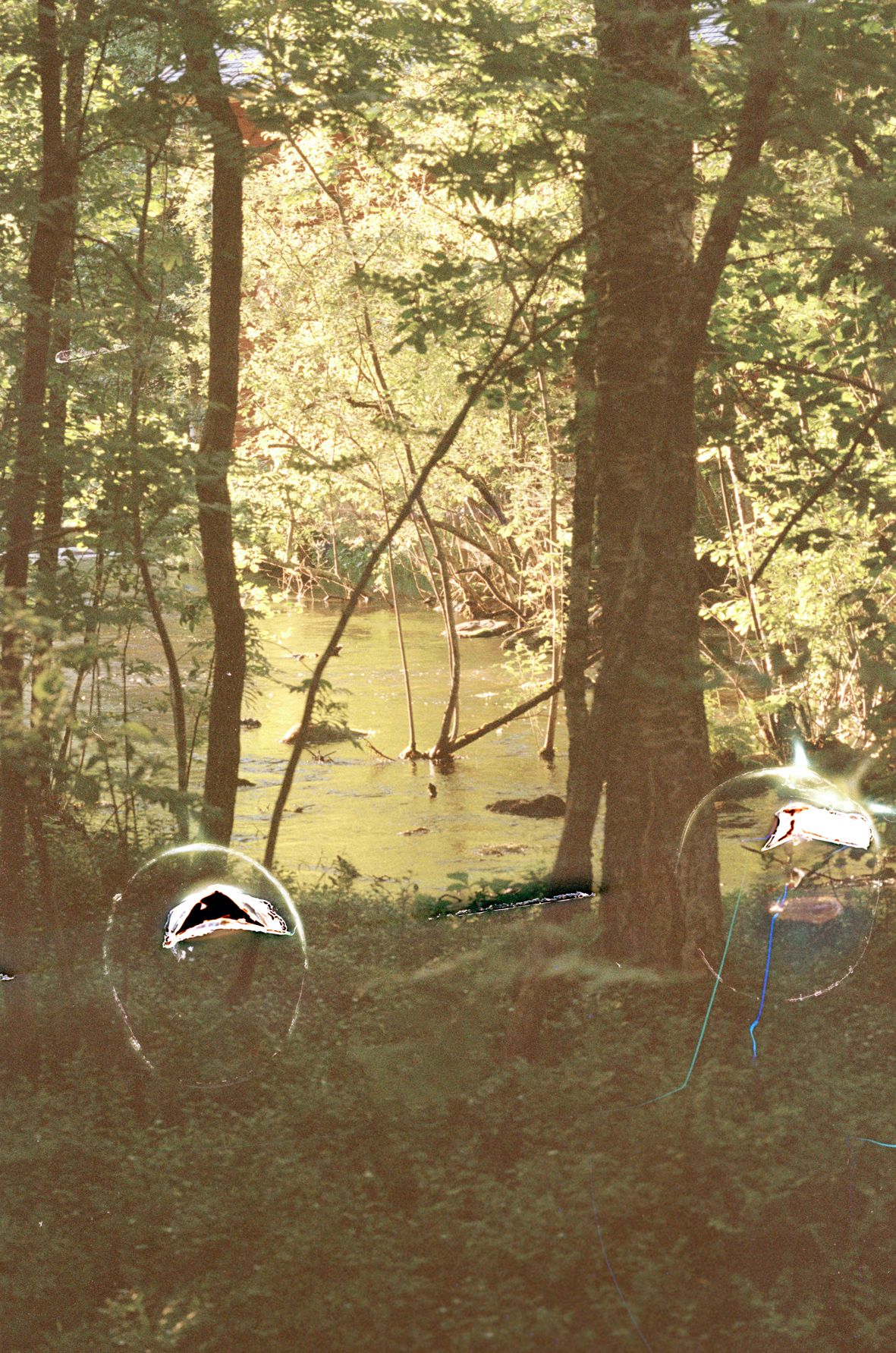
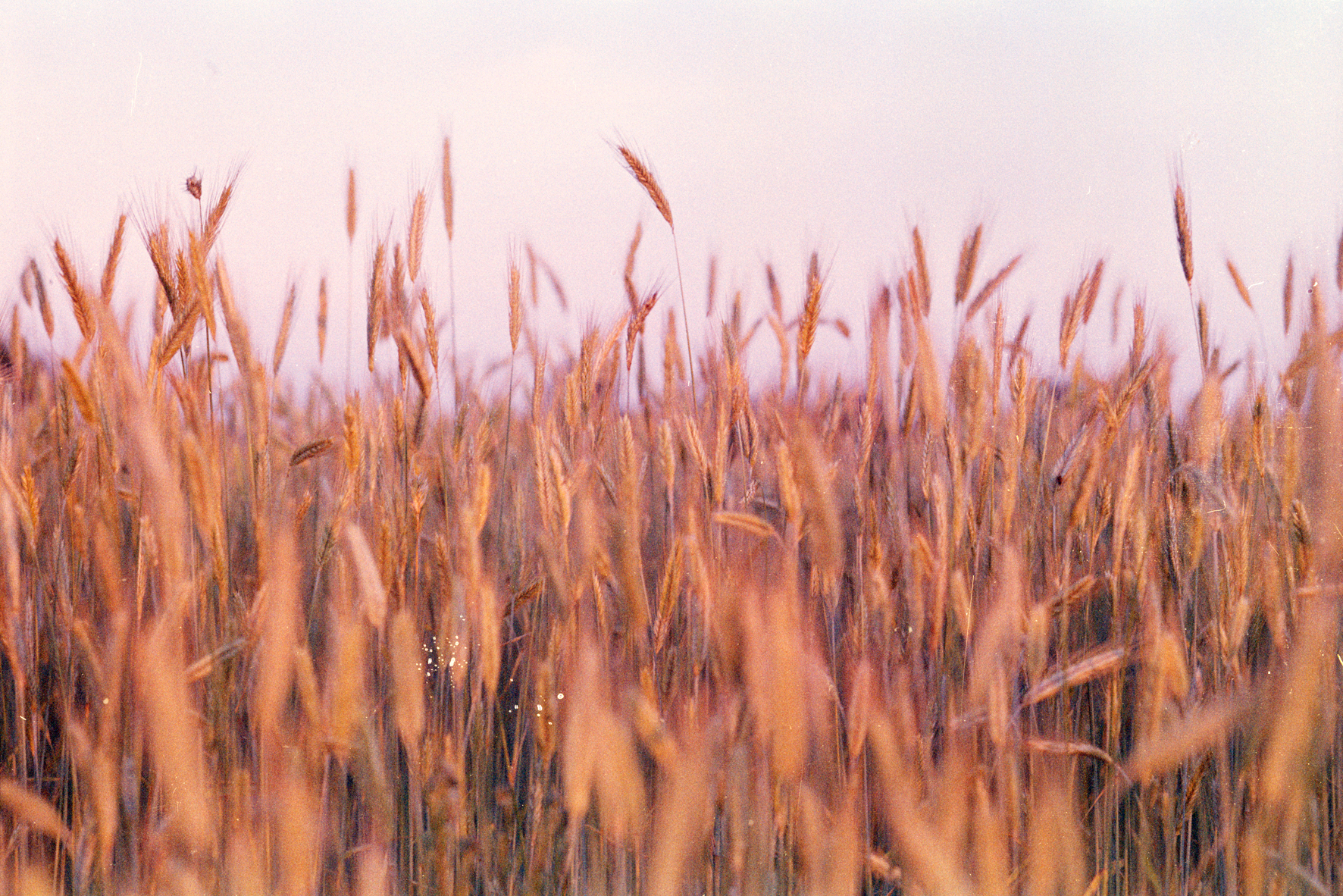
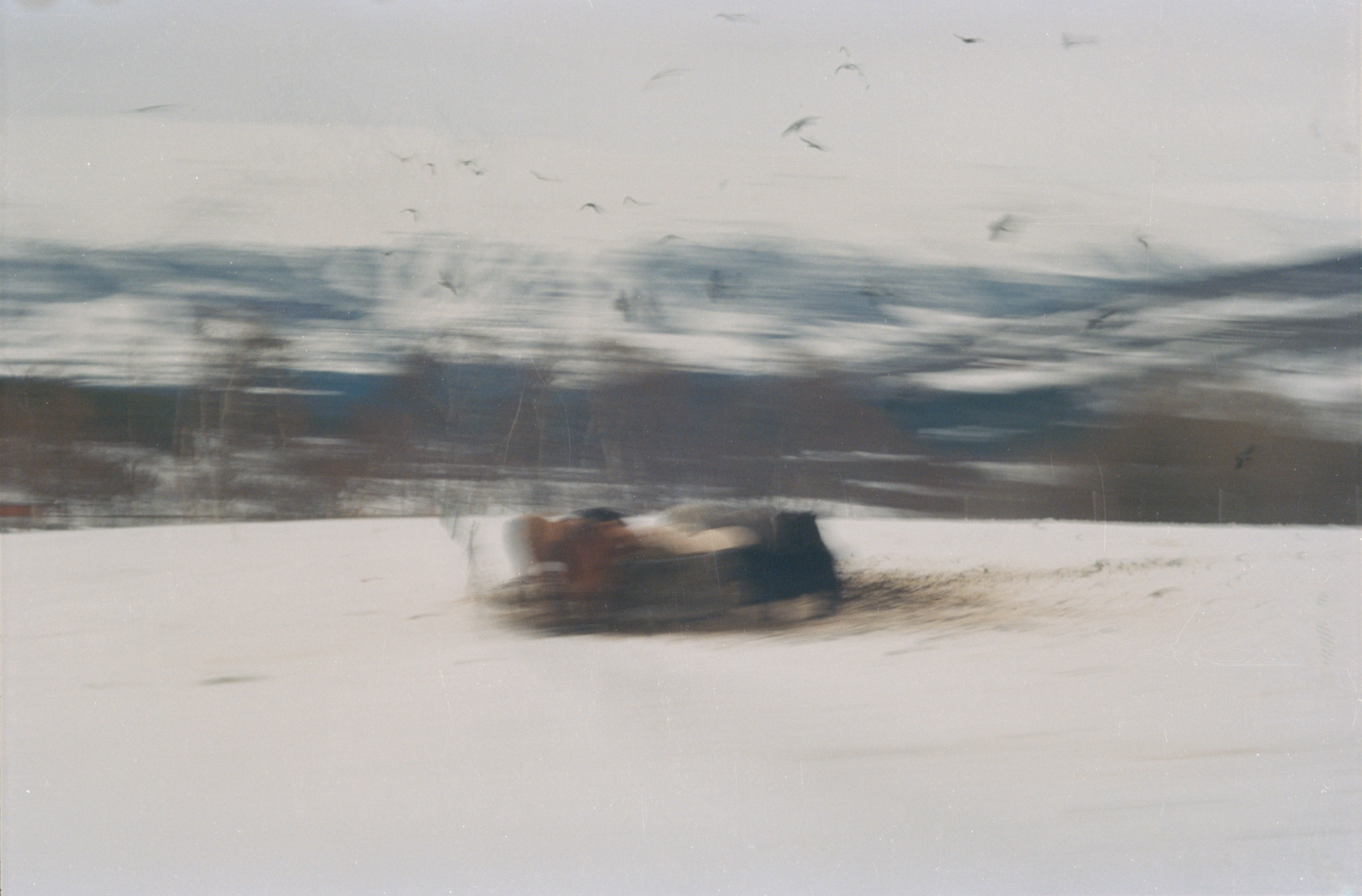
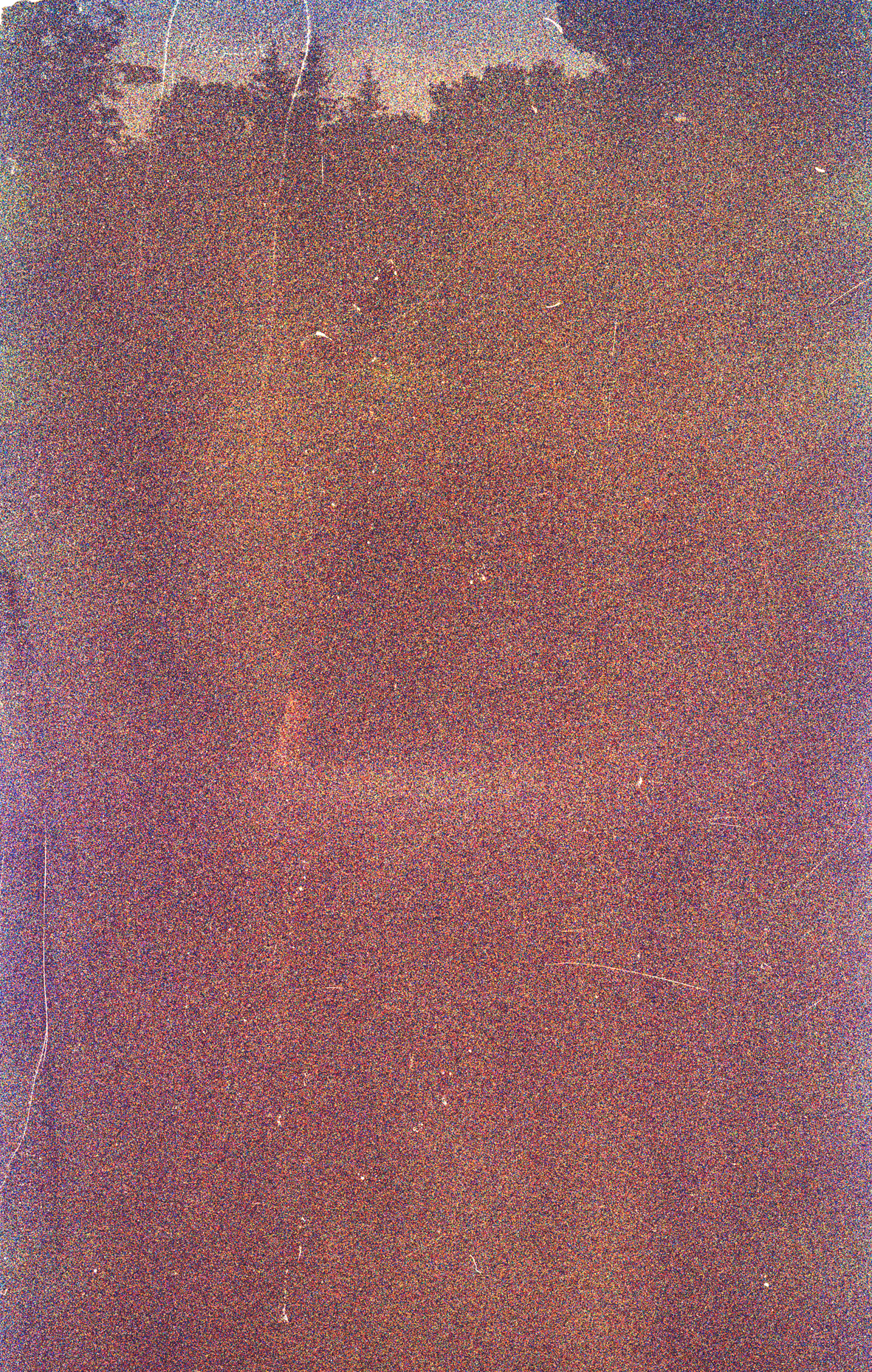
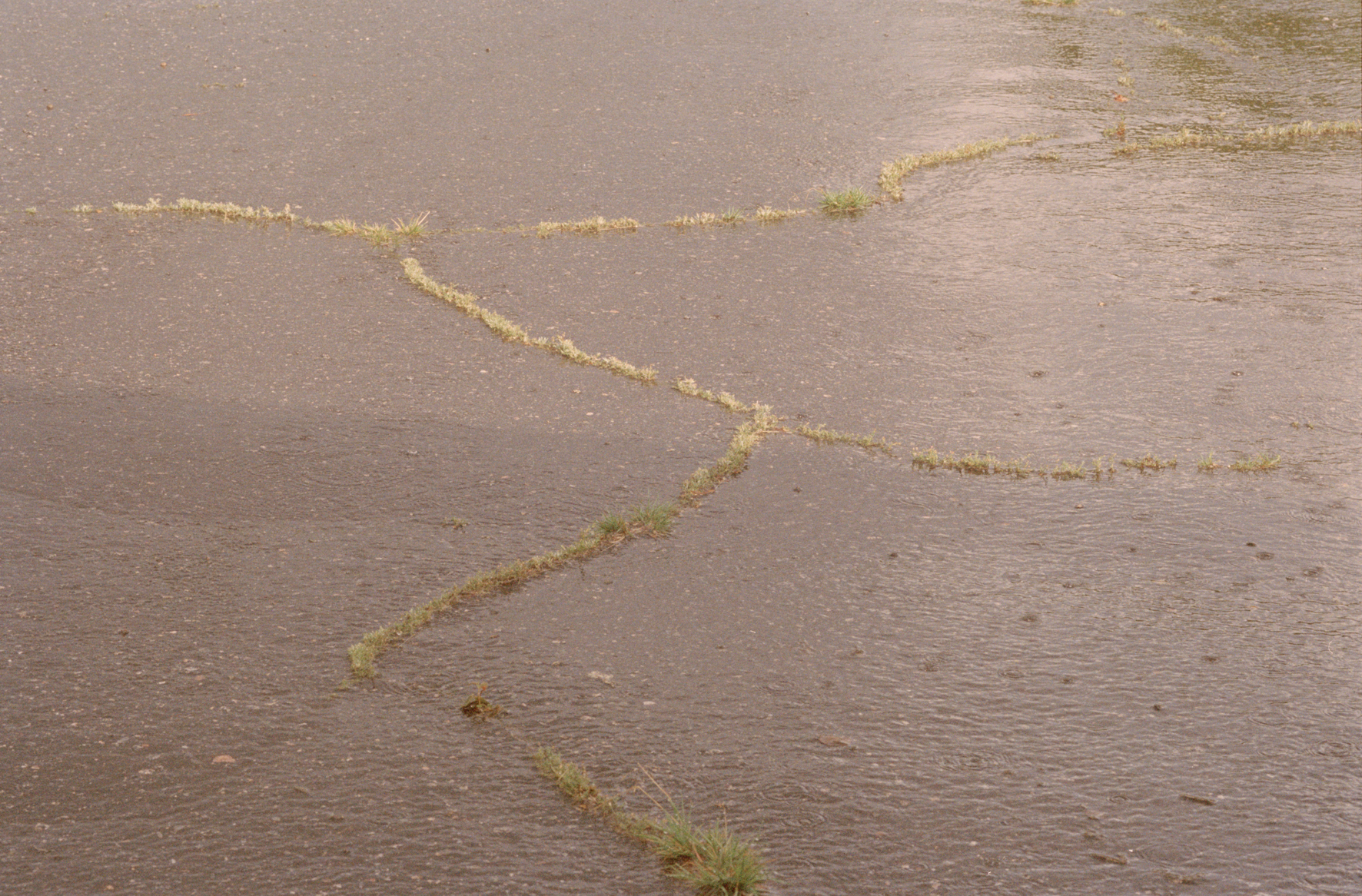
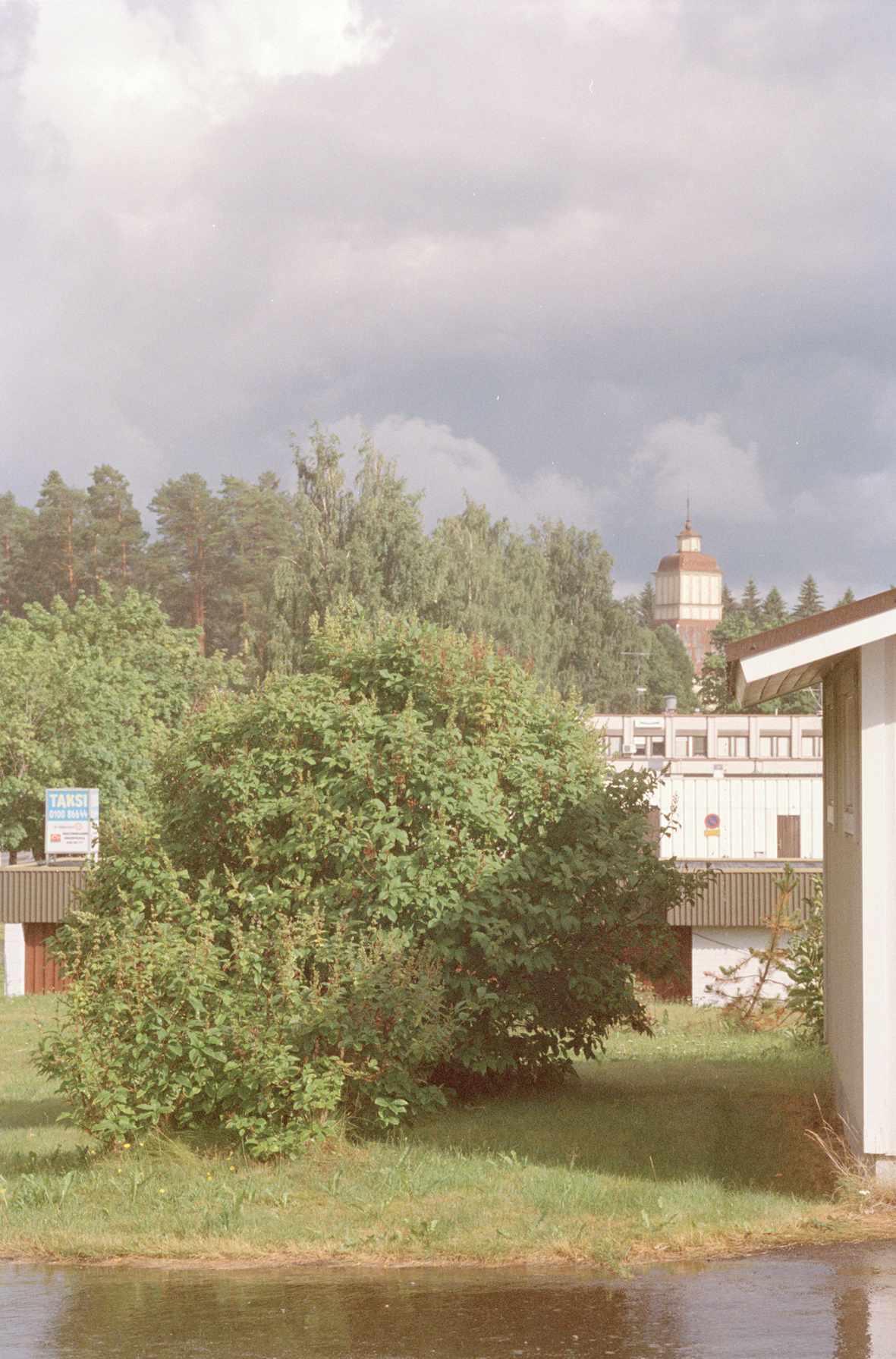
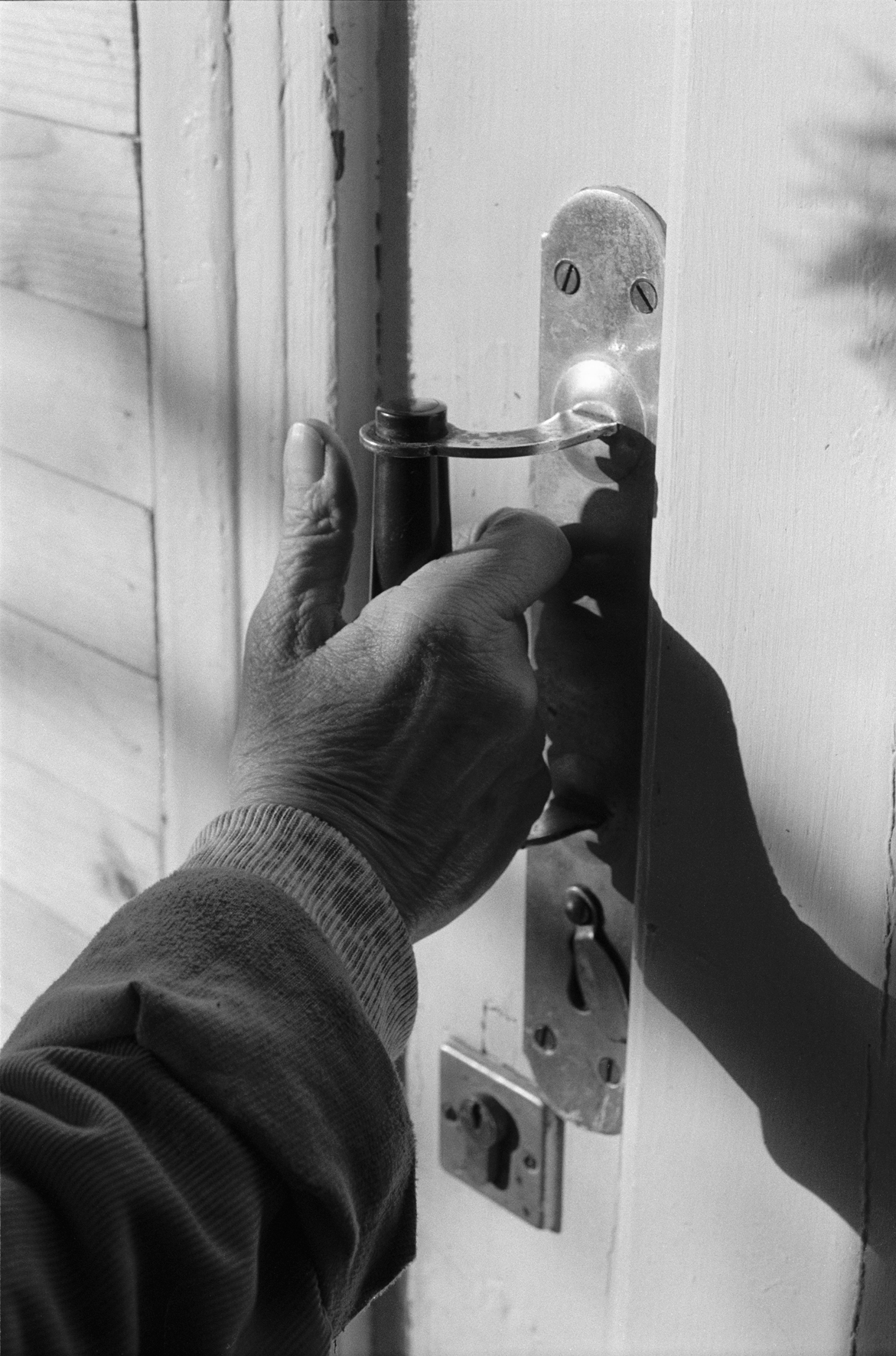
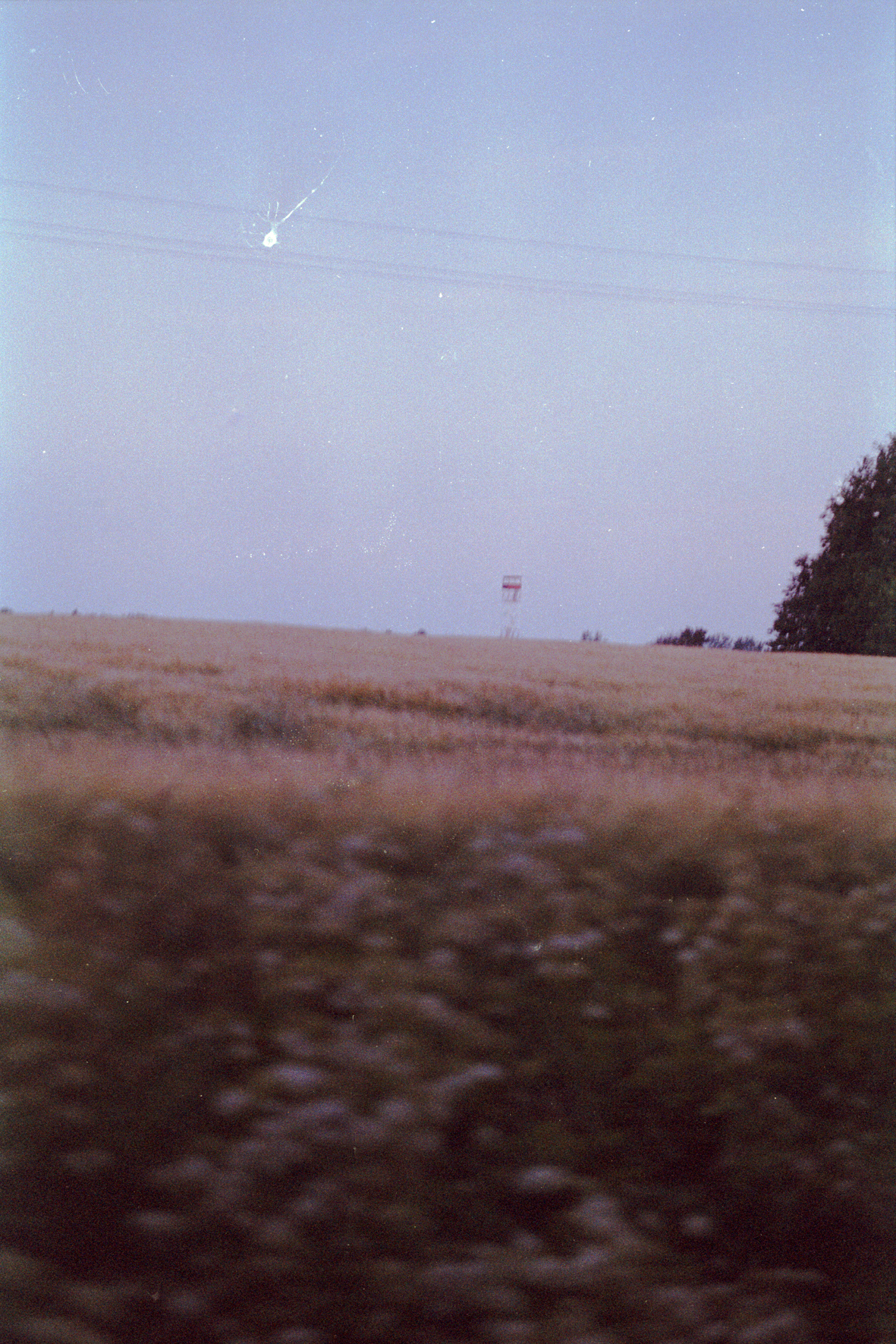
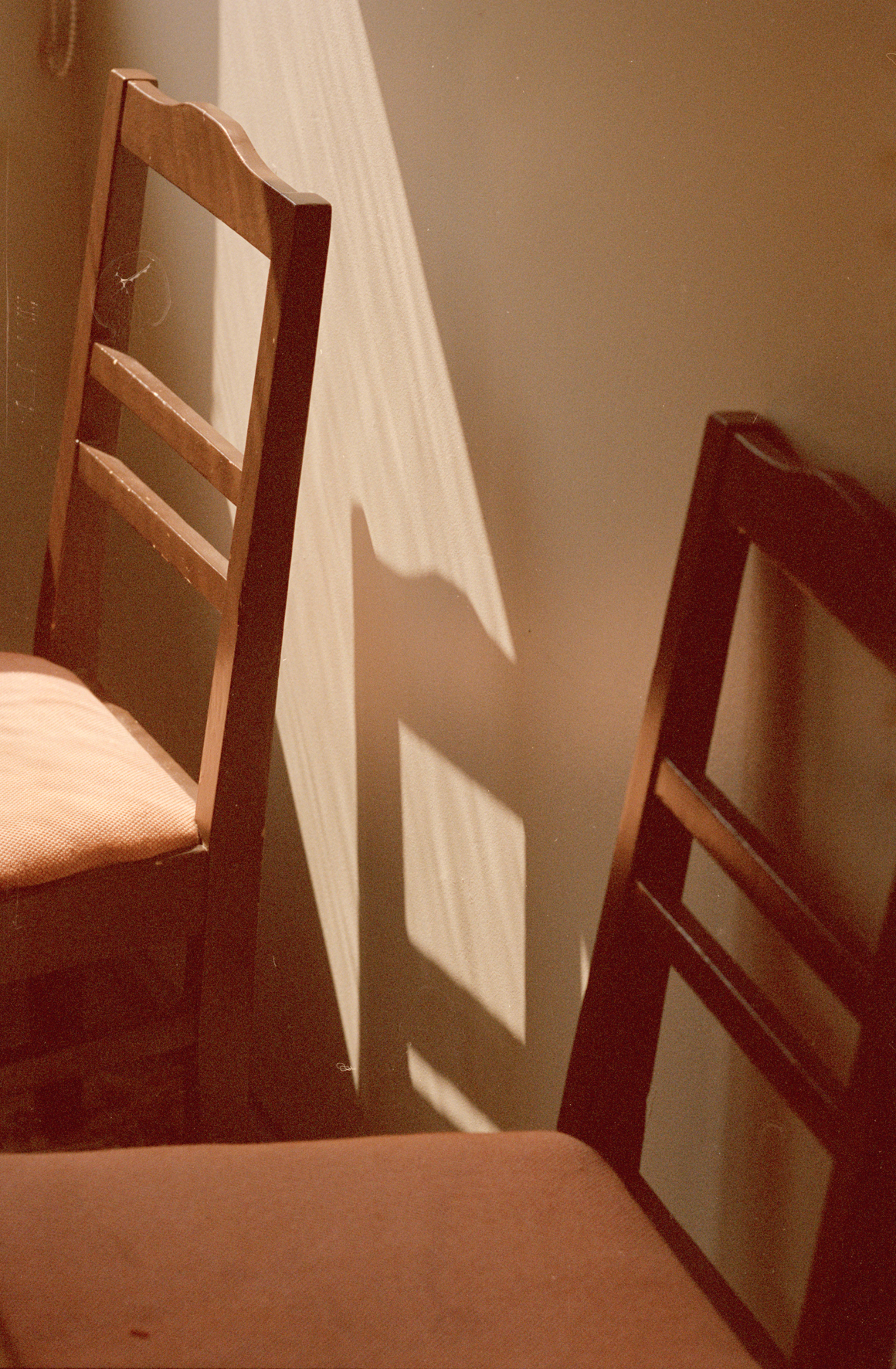
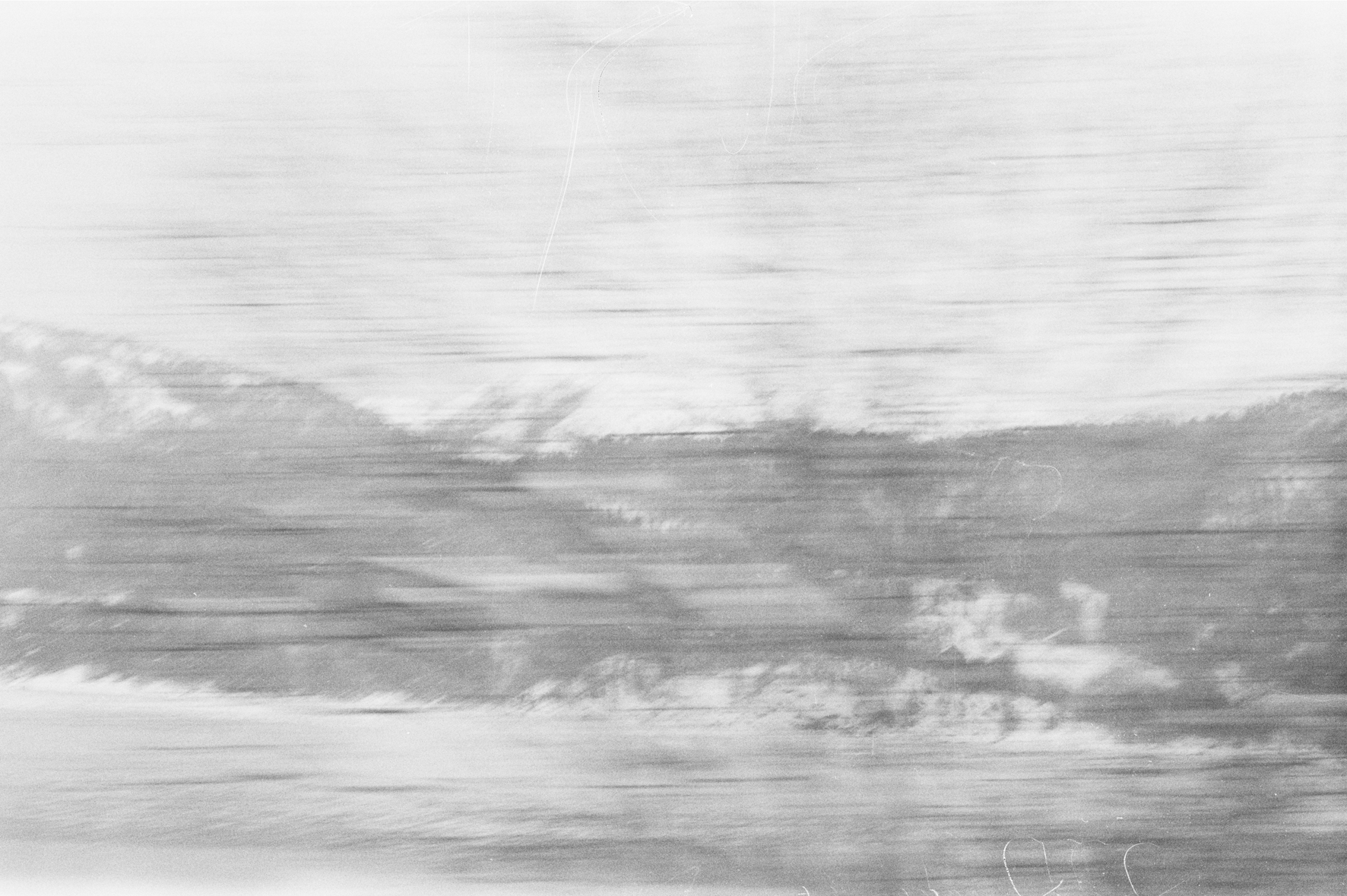
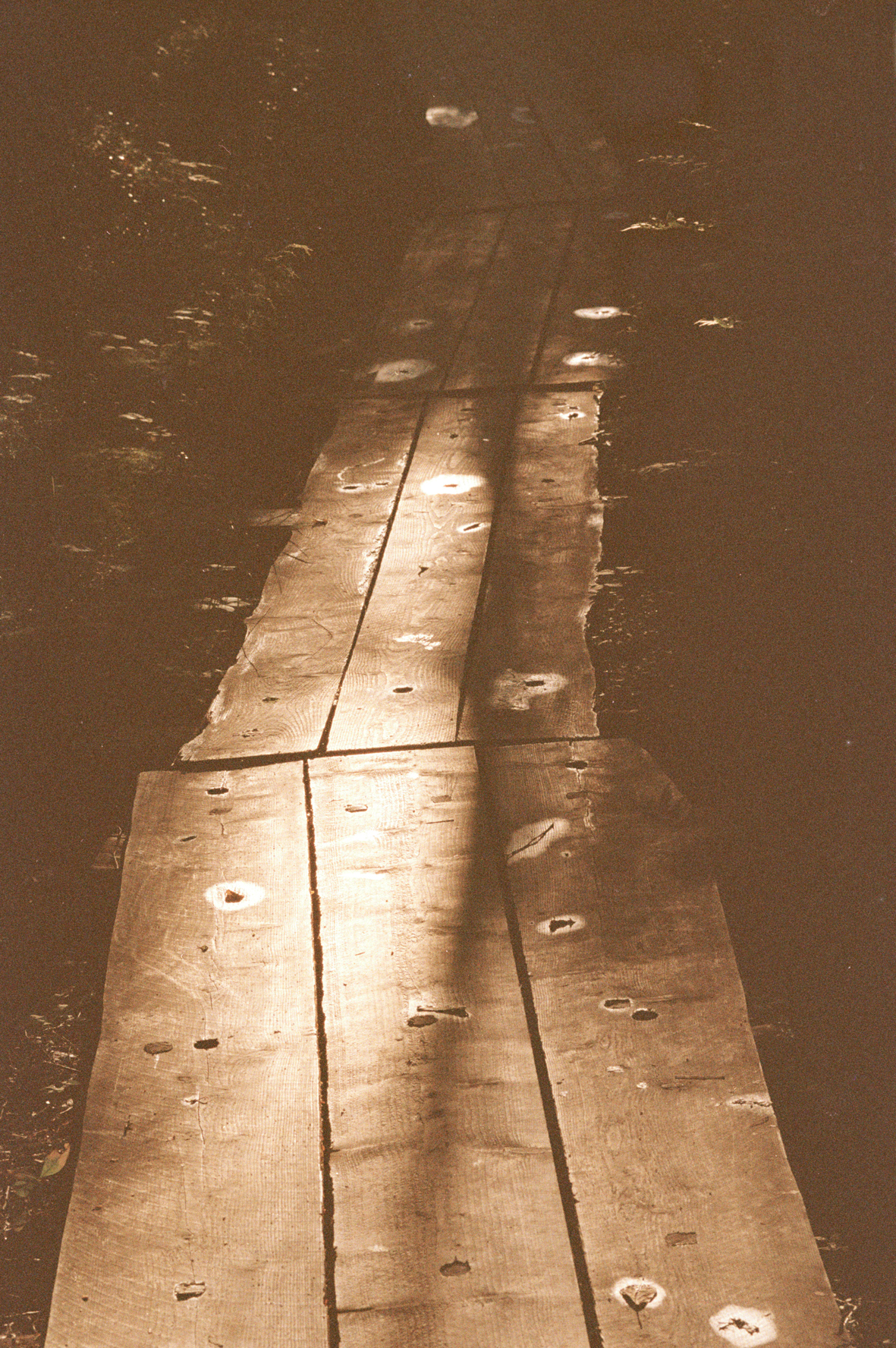
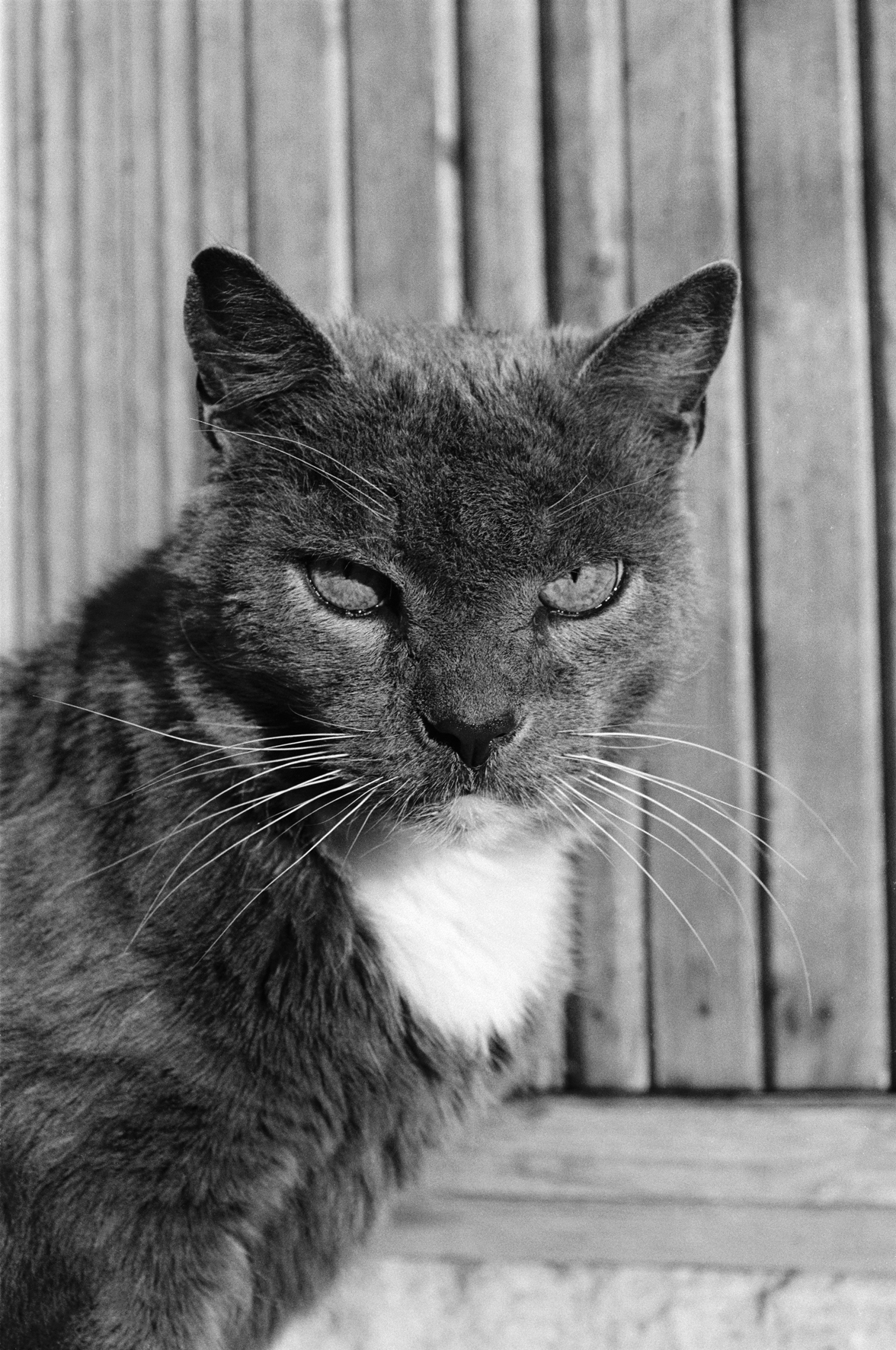
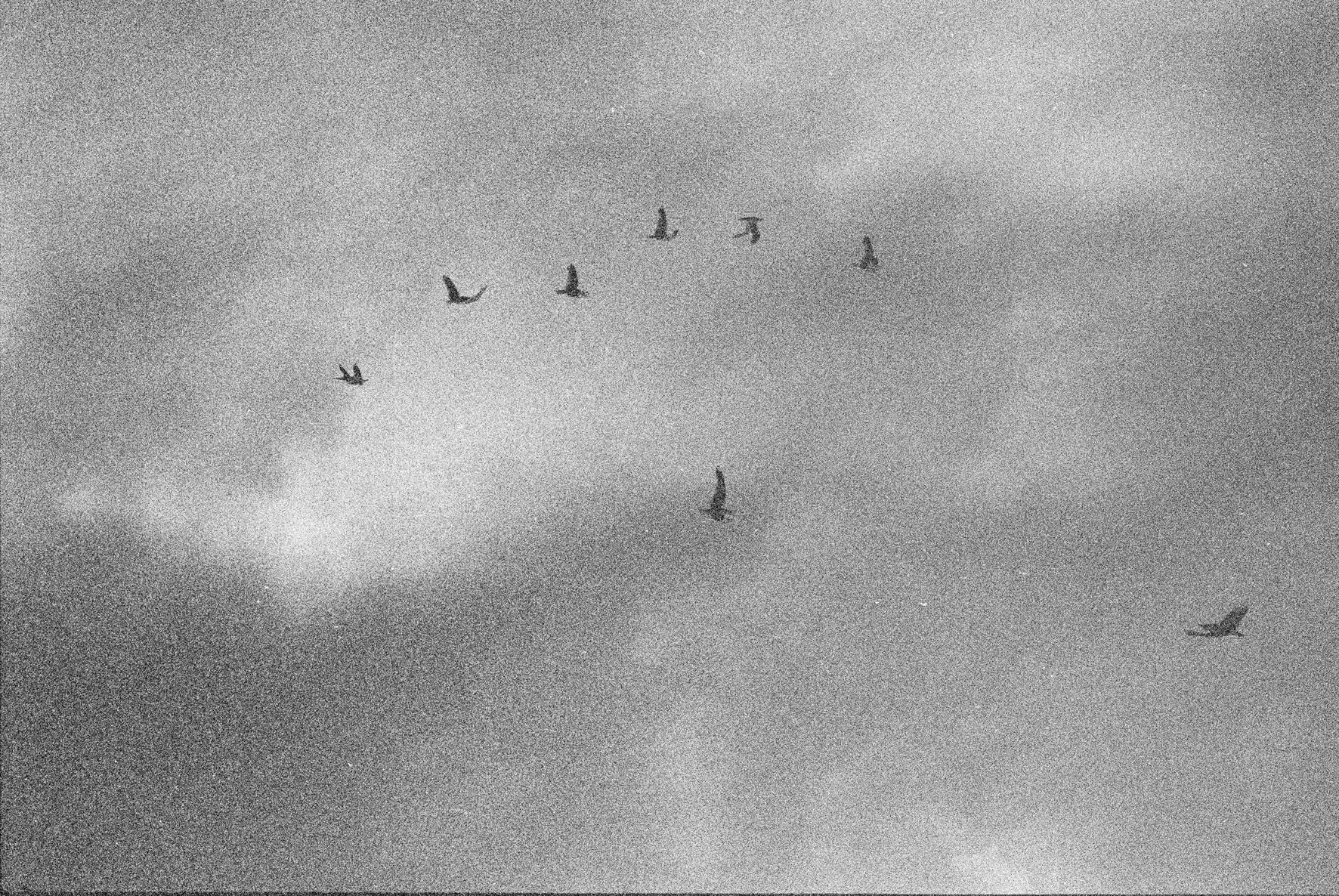
I’m only passing through

The blue hour has turned into black, and I can no longer distinguish the contours of the treetops from where I sit. The elderly black German shepherd named Leica has just jumped up and squeezed herself onto the narrow mattress, too; the warmth from her makes me feel drowsy and safe.
This oblong room with white walls, ceiling and floor is one that is mostly only passed through on the way to the bedroom. On rare occasions, a fire is lit in the old minuscule wooden stove, and on some brighter days, it serves as a painting studio for my mother-in-law.
Once, this was the only room upstairs, until the tiny wooden Dalsland-cottage was extended into a bigger, more modern house with an open floor plan. Now, this room is one of many pass-through spaces. Due to its shape, it feels more like a corridor than an actual room. As if the wind would blow right through it. But I like it. Somehow, it resonates with me. Since I also always seem to be passing through.
Maybe passing through is what makes me feel at home. After all, that’s what I’ve been doing for my whole life. I am a product of my childhood – fragmented memories from different apartments, houses, neighborhoods, countries, landscapes, languages, and people all intertwine into a big messy definition of home. As a youngster, I used to be upset about the fact of not having that one stable place to watch my back. Later on, I’ve come to terms with the fact that the definition of home doesn’t have to be that fixed. It can be many things, and definitely more than just one place.
Some days later I’m sitting outside on the wooden stairs, with the first warm afternoon rays of the March sun in my eyes. Quite similar to the day I first came across Tales of Tono by Daido Moriyama. Almost blended by the sun, I found that this specific book that had been waiting on the shelf for a long time, was, in fact, putting into words (and images) something I had been struggling to express for years. Like myself, I read that Daido Moriyama has never had that one place to call home, which drives him to chase after it with his camera. He talks about his search for what he calls the original landscape: an afterimage of the home, consisting of tiny interwoven fragments of different places and experiences. The reason behind his visit to Tono is that this town has started to represent this original landscape for him. In a sense, he is going home…although he’s never been in Tono before, and after the trip, he’ll probably never return.
When I think of my own original landscape I can both see and hear tiny, intertwined fragments; image and sound have always gone hand in hand for me. These fragments are many, and a lot of them exclude one another. There are lush gardens, old forests, and open meadows next to dark mountains and stormy seas; there is hard rock beside dark, soft soil. But despite the immediate mismatch they’re all a perfect match in my afterimage. They’re all home. Nowadays, whenever a view, a light, a voice, or a melody that crosses my path reminds me of this original landscape, I want to capture it.
Unconsciously, my hand stretches out for the camera to take what seems to be the same image for the hundredth time.
It’s never exactly the same, though. It’s just another one that bears a likeness to something from my memory. Sometimes, the memory and reality almost overlap, mostly in places I have spent more time at or keep revisiting (maybe this is exactly how a person who stays in one place for their whole life experiences home? A home where there is no evident conflict between what was and what is?). Other times, I try to match the reality to my afterimage, but they remain separate. And I feel bad for demanding too much from my surroundings. For living too much in the past and not being present.
When I go to different places, especially to Tono, without knowing it I end up trying to find an after-image that exists in myself, the image of a landscape that I’ve seen as a young boy. /…/ My obsessive interest for this original landscape – I’m not even sure whether or not I saw it one day, a long time ago – aims for the original landscape and, at the same time, for the present.
The original landscape is also an impossible one. Daido Moriyama summarizes it well. Deep down, although he knows that no reality can match his original landscape, he still always hopes to find it. This conflict is what all his photographic ouvre is about. In my case, I think that the strive to find an overlap follows me all the way into the darkrooms and music studios. Playing around and editing the photographs or composing music from the gathered sounds can help me express what reality often fails to do. It helps me find the afterimage of home by constructing it. Makes me believe in the possibility at least.
I am riding a train through a landscape that is almost mine.
It would’ve been mine if I wouldn’t have moved away from it as a child.
Now I am immersed in this landscape; one moment its snow-covered walls of solid rock are cocooning the train from both sides so that only the sky is visible, in the next one side becomes exposed to the whole valley below, as if we’re suddenly floating through air.
My camera has laid packed away, waiting to be used in my final destination. But I now feel an urge to take it out. The landscape feels familiar and mysterious at the same time, calling me to take a step; to become acquainted with it. Or is it the other way around – that I want to claim it through capturing it, make it more mine?
With camera in hand, I turn to the mountains and look into the viewfinder. But the mechanical sounds from my old metal friend are so loud in this train that glides almost inaudibly through the matte landscape. Like a hand striking velvet. The loud flapping of the mirror cuts through the tranquil wagon like a dull knife. Suddenly, I am self-aware. The intimate softness between myself and the landscape is interrupted by the loudness of the tool with which I was hoping to capture the magic.
I almost always carry my camera and sound recorder with me, especially when going someplace new. The act of taking a picture or recording a sound is comforting and immersive; it is a way of befriending (as well as revisiting) my surroundings. Bringing them closer to me, remembering them.
Both mediums carry a feeling of safety for me, and, from my perspective, are closely related. Both have the ability to capture and eternalize moments, but also to alter these moments way after they happened. I have thought of them as extensions of one another: the sound prolongs the image; the image concretizes the sound. In an essay called StoriesJohn Berger argues that if there is a narrative form intrinsic to still photography, it will search for what happened, as memories or reflections do. He contrasts this to the film, which is always preoccupied with anticipation of what is yet to come. I think that even most sound (as long as they’re not short samples) shares the qualities of the motion picture, merely because its time-bound nature. In order to know the whole song, you need to listen from the beginning to the end. I believe that the strength of using still image and sound together is that they can extend each other’s boundaries through operating in different times.
In a recent discussion my partner, also a practitioner of both photography and sound, meant that an image can be thought of as the envelope of a sound. In musical terms, an envelope describes how a sound changes over time. It consists of an attack, decay, sustain and release, that are factors that steer how we perceive the sound. A simplified explanation: the attack of two wooden blocks hit together is short and it fades immediately after – the sound is perceived as sudden, hard, maybe even aggressive; the attack of a bow striking the strings of a cello is longer and the note can sustain long enough to create a soft, drone-like mood. Christopher’s theory would then suggest that images could have the same qualities: there are those with a short attack, knocking you out in a second and leaving you either amused or empty-handed, and there are those whose impact reaches you only after some time has passed, maybe even when you’re not looking anymore (maybe they have a long release?).
In contrast to what I wrote earlier about the gap between reality and the afterimage I have, quite recently, also experienced that a single sound or photograph can (sometimes) have the potential to encapsulate everything that a home is. This can happen during a moment of total presence when the mind is not searching. In other words, the past can appear closer to the present when one leaves it alone. Sounds and images from long ago can then quite casually enter and interact with the now. Waking up to someone preparing breakfast downstairs, the sound of a metal spoon hitting the sides of a porcelain cup. The same as forever ago and therefore, as present as it is past. The image of a flower garden basking in the soft blueish tint of dusk around mid-summer. The same as always. These images and sounds are already part of my afterimage, but also still happening. Their dimensions exceed my comprehension, they are like bright stars in a vast universe that show me the way. Like the imaginary points of Luigi Ghirri’’s impossible landscapes:
It is difficult to say why a room, a colour, a space, a house, unexpectedly become familiar, become ours. We feel we have inhabited these places; a sense of total harmony makes us forget that all this existed and will continue to exist beyond our gaze.
Lining them up one after another, these places form a sort of strange sequence consisting of stones, churches, gestures, lights, fogs, frost-covered branches, blue seas; they become our impossible landscape, without scale, without a geographic order to orient us; a tangle of monuments, lights, thoughts, objects, moments, analogies from our landscapes of the mind, which we seek out, even unconsciously, every time we look out a window, into the openness of the outside world, as if they were the points of an imaginary compass that indicate a possible direction.
Bibliography
Berger, John. Understanding a Photograph. Geo Dyer (red.). London: Penguin Books, 2013.
Ghirri, Luigi. The Complete Essays 1973-1991. London: MACK, 2016.
Moriyama, Daido. Tales of Tono. London: Tate Publishing, 2012.
Rutström, Christoffer; student MA i fotografi vid HDK-Valand, samtal 2023-02




